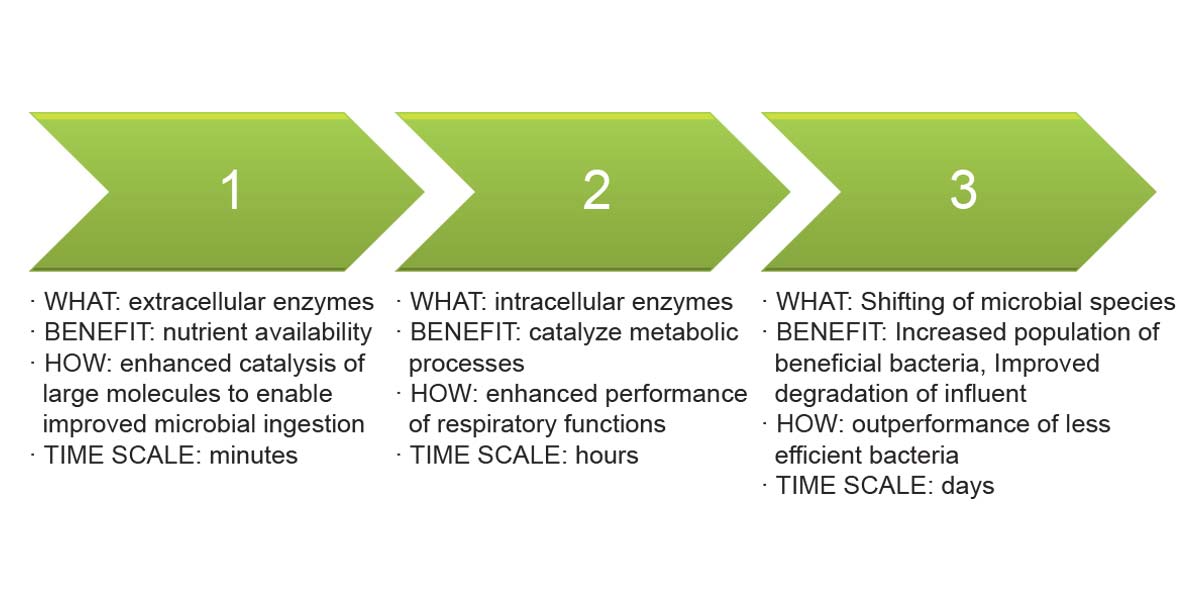Mode of Action

In the Waste Treatment area, we are concentrating on three mechanisms, each with a distinct timescale:
– Extracellular Enzymes
– Intracellular Enzymes
– Shifting of Microbial Species
These three mechanisms combine in changing degrees, depending on a biological system’s specific environmental circumstances, to achieve several benefits as summarized in the graphic on the left.
In Agronomy, it is commonly recognized that bacillus subtilis organisms benefit the soil and plants. The bacillus subtilis species contained in the consortium have proven to be more efficient than other bacillus bacteria. Our organisms work to increase the soil microflora activity and together they improve nutrient availability, enhanced root growth, and prohibit growth of non-beneficial bacteria. These results are presented studies by Helena Research and the Center for Applied Horticultural Research in California, as well as several commercial field applications by growers around the world.
In Aqua Culture, we believe the predominant mode of action is through bio-augmentation, promoting beneficial bacteria growth in intensive shrimp production, coupled with the effectiveness of metabolites such as pediocins which inhibit pathogenic bacteria produced by lactic acid bacteria. Recent studies at Texas A&M University by Dr. Addison Lawrence show promising effects of our technology in improving shrimp growth, survivability and feed conversion. In conjunction with Dr. Lawrence, our Technologies has also developed a one of a kind and proprietary screening method for evaluating biological products for performance intensive shrimp aquaculture.
- Connector.
WHAT: extracellular enzymes
BENEFIT: nutrient availability
HOW: enhanced catalysis of large molecules to enable improved microbial ingestion
TIME SCALE: minutes - Connector.
WHAT: intracellular enzymes
BENEFIT: catalyze metabolic processes
HOW: enhanced performance of respiratory functions
TIME SCALE: hours - Connector.
WHAT: Shifting of microbial species
BENEFIT: Increased population of beneficial bacteria, Improved degradation of influent
HOW: outperformance of less efficient bacteria
TIME SCALE: days
